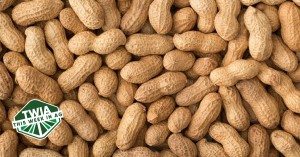This summer we’ve entertained a visitor from Japan, my son’s girlfriend, Riko. So what do you suppose one of her favorite things to do in America is? Go to the grocery store. A trivial, if not mundane task for most of us is a full-on experience for her. Now keep in mind, Japan is among the most technologically advanced countries in the world. Overall, Japanese citizens enjoy a comfortable standard of living. And Riko’s family owns a successful business in Osaka. Yet she’s the first one in the car when an impending trip to Kroger is announced. She marvels at the abundance and incredible selection of food items cascading throughout the aisles. We’ve had other visitors from other parts of the world share similar feelings. Those of us in the USA enjoy the most abundant and safest food supply in the world. As a country with over 330 million inhabitants, America is self-sufficient in food production more than 6 times over and ranks as the world’s leading food exporter. Sometimes it takes a visitor to make us pause and appreciate what we have. God certainly has Blessed America.
My corn has entered the dent phase. This is identified by a depression in the crown of the kernel. It is a natural process caused by starches in the center of the kernel shrinking, thus forming the dent. This is a key event in the plant’s life and signals maturity is near. However, the kernels can still absorb moisture and nutrients during this phase and add more weight. Kernel content is about 50% moisture right now, so there’s plenty of room to accumulate dry matter. That’s why last week’s Huma foliar application and 1″ of rain was important to influencing yield. Based on the extreme heat we continue to experience – we’re accumulating over 30 Growing Degree Units per day based on hot nights – I’m guessing the corn may reach physiological maturity within 2-3 weeks.
Farmers love finding 20s – an ear with 20 kernel rows – in their cornfield. I pulled this 20 out of the field after church on Sunday. At high populations – my stand count was 40,650 plants per acre when I took it at the V4 stage – you rarely see ears this big. There are several 18s and 20s throughout the field. This ear feels like a brick. Also, note the beautiful bright yellow color.
As the calendar turns to August, we move into the most critical point in a soybean plant’s life. Soybeans are approaching the end of flowering across much of the fruited plain. Getting plants to produce more flowers and pods is just one part of the yield equation. Holding and filling them is another deal. Soybeans typically abort 70% of their flowers and pods. So even getting them to hold 10% more can significantly boost yields. Just as it’s imperative to mitigate crop stress in corn during pollination, the same is true now for soybeans. Yet early August often brings miserable heat levels which leads to crop stress. It’s beneficial to apply fungicide, foliar fertilizers and growth managers around this time. And rains throughout the month of August are welcomed sights as pods are filling and seeds are growing.
On Saturday night I attended “Feast on the Farm” for Agricenter International. This annual fundraiser brings together the mid-South’s agricultural community and its friends. I proudly serve on the Board of Directors for this non-profit, the world’s largest urban farm: a 1,000-acre campus nestled inside the city of Memphis. Our main charter is agricultural education, which takes on a unique perspective given we are based in a highly urban area. Agricenter conducts over 20,000 research plots for over 200 clients (including Huma), administers the Tennessee cooperative extension service, offers over 100 educational programs to people of all ages and educates over 10,000 students in person annually. Given all that, I am both honored and humbled to announce that I have been asked to serve as Chairman for Agricenter International’s Educational Committee.
Related Posts

This Week In Ag #97
New Year’s babies bring a renewed spirit of hope to those whose lives they touch. On January 1, 1865, a baby born in Diamond, Missouri, not only brought hope, but salvation to US agriculture. His name was George Washington Carver.

March 22 Is National Agriculture Day
National Agriculture Day is celebrated on March 22. This 49th anniversary of National Ag Day is being celebrated in classrooms and communities across the country with a 2022 theme of “Growing a Climate for Tomorrow.” In a virtual Ag Day event, the Agriculture Council of America (ACA) will bring approximately 100 college students to Washington

Amazing Results with HUMA GRO® on Cotton Farm
See what Russel said about his cotton farm and the results of applying HUMA GRO® SUPER PHOS™ and BREAKOUT® nutrients to the crop. Or see more videos here.



